Re The UN General Assembly Speaker Schedule is Here! I note that whoever will be speaking for Canada this year…
Oceans and seas
Written by Diana Thebaud Nicholson // December 29, 2019 // Climate Change, Water // 3 Comments
(National Geographic): Ocean Levels Are Getting Higher—Can We Do Anything About It?
Council on Foreign Relations Global Governance Monitor: The Oceans
I tell you naught for your comfort,
Yea, naught for your desire,
Save that the sky grows darker yet
And the sea rises higher.
— G.K. Chesterton
29 December
Court upholds Obama’s creation of national monument in Atlantic
(AP) — A federal appeals court on Friday upheld former President Barack Obama’s designation of a federally protected conservation area in the Atlantic Ocean, a move that commercial fishermen oppose.
Fishing groups sued over the creation of Northeast Canyons and Seamounts Marine National Monument, a 5,000-square-mile area that contains fragile deep sea corals and vulnerable species of marine life. The monument was established in 2016.
A federal judge dismissed the lawsuit last year, and the Court of Appeals for the District of Columbia Circuit upheld the decision Friday.
“Like one of America’s very first national monuments, the Grand Canyon, the Northeast Canyons and Seamounts is a natural treasure. It provides habitat for a wide range of species, from endangered whales to Atlantic puffins to centuries-old deep-sea corals,” said Kate Desormeau, senior attorney for the Natural Resources Defense Council.
The area is the only marine monument in the Atlantic Ocean and is one of five marine monuments nationwide.
7 December
Climate change: Oceans running out of oxygen as temperatures rise
(BBC) Climate change and nutrient pollution are driving the oxygen from our oceans, and threatening many species of fish.
That’s the conclusion of the biggest study of its kind, undertaken by conservation group IUCN.
While nutrient run-off has been known for decades, researchers say that climate change is making the lack of oxygen worse.
Around 700 ocean sites are now suffering from low oxygen, compared with 45 in the 1960s.
Researchers say the depletion is threatening species including tuna, marlin and sharks.
If countries continue with a business-as-usual approach to emissions, the world’s oceans are expected to lose 3-4% of their oxygen by the year 2100.
This is likely to be worse in the tropical regions of the world. Much of the loss is expected in the top 1,000m of the water column, which is richest in biodiversity.
4 December
Florida Keys Deliver a Hard Message: As Seas Rise, Some Places Can’t Be Saved
(NYT) Officials in the Florida Keys announced what many coastal governments nationwide have long feared, but few have been willing to admit: As seas rise and flooding gets worse, not everyone can be saved.
And in some places, it doesn’t even make sense to try.
2 December
Climate Conference to Spur Action on the Ocean
The ocean is increasingly affected by the global rise in temperatures, and as a result is significantly impacting marine ecosystems, coastal areas and human societies. This will be a major topic of discussion at the UN Climate Change Conference (COP25) in Madrid this year.
The world’s population relies on the ocean in more ways than realized. It is a key source of oxygen that is needed to survive (every second breath you take comes from the ocean) and it mediates global temperatures. The ocean, coastal areas and their ecosystems are not only a huge reservoir of biodiversity, but also provide valuable services for humans. The fisheries and aquaculture sector, for example, supports the livelihoods of 10-12% of the world’s population.
The recently published IPCC Special Report on the Ocean and Cryosphere in a Changing Climate (SPROCC) identifies the projections of intensified climate change impacts on the ocean, coastal areas and ecosystems. The report highlights that although adaptation measures can generate many co-benefits at different scales, it warns that some adaptation solutions could be limited if climate change is not sufficiently mitigated.
Climate change impacts act as threat multipliers by combining with other man-made impacts, such as unsustainable coastal development, habitat alteration and overexploitation of living marine resources. These impacts threaten livelihoods and food security.
12 November
The climate chain reaction that threatens the heart of the Pacific
the Sea of Okhotsk is significantly warming, three times faster than the global mean.
(WaPo) The rising temperatures are starting to shut down the single most dynamic sea ice factory on Earth. The intensity of ice generation in the northwestern Sea of Okhotsk exceeds that of any single place in the Arctic Ocean or Antarctica, and the sea ice reaches a lower latitude than anywhere else on the planet. Its decline has a cascade of consequences well beyond Japan as climate dominoes begin to fall.
When sea ice forms here, it expels huge amounts of salt into the frigid water below the surface, creating some of the densest ocean water on Earth. That water then sinks and travels east, carrying oxygen, iron and other key nutrients out into the northern Pacific Ocean, where marine life depends on it.
As the ice retreats, that nutrient-rich current is weakening, endangering the biological health of the vast northern Pacific — one of the most startling, and least discussed, effects of climate change so far observed.
31 October
WaPo editorial board: Rising seas are a much bigger danger than experts thought … while much study has examined the shift in amount and warmth of seawater humans will face, there is another variable scientists must get right to assess the risk to humanity: just how many people live in low-lying areas. A new paper suggests previous estimates of land elevation — and, therefore, the number of at-risk people — were wrong.
Rising Seas Will Erase More Cities by 2050, New Research Shows
(NYT) Rising seas could affect three times more people by 2050 than previously thought, according to new research, threatening to all but erase some of the world’s great coastal cities.
The authors of a paper published Tuesday developed a more accurate way of calculating land elevation based on satellite readings, a standard way of estimating the effects of sea level rise over large areas, and found that the previous numbers were far too optimistic. The new research shows that some 150 million people are now living on land that will be below the high-tide line by midcentury. New elevation data triple estimates of global vulnerability to sea-level rise and coastal flooding
24 October
Climate science: 300-year thinning may have predisposed Antarctic ice shelves to collapse
(Eureka!) Ice shelves in the eastern Antarctic Peninsula may have been predisposed to collapse by hundreds years of thinning according to a study in Scientific Reports.
To investigate past drivers of ice mass loss and its effect on the present, William Dickens and colleagues constructed a 6,250 year record of glacial meltwater discharge by analysing oxygen variants (isotopes) in single-celled algae preserved within a marine sediment core from the northeastern tip of the Antarctic Peninsula. Lower isotope values correspond to higher glacial discharge of fresh water.
The authors found that an increasing trend in glacial discharge occurred after the year 1400 reaching unprecedented levels after 1706. Another marked acceleration in glacial melting was observed after 1912. The findings suggest that ice shelves in this region have been thinning at an accelerating rate for approximately 300 years, which may predispose them to collapse as anthropogenic warming intensifies.
The authors suggest accelerated thinning was in part linked to shifts in the Southern Annular Mode that drove stronger westerly winds, atmospheric warming and ice shelf melting on the eastern Antarctic Peninsula, while also pulling warm water into the Weddell Gyre, potentially increasing melting on the undersides of ice shelves. Similar, more frequent shifts in the Southern Annular Mode observed more recently may reflect the dominant influence of greenhouse gas levels and ozone depletion and lead to accelerated ice mass loss in the future.
See Enhanced glacial discharge from the eastern Antarctic Peninsula since the 1700s associated with a positive Southern Annular Mode
9 October
East Siberian Sea Is Boiling With Methane
Russian scientists on an Arctic expedition have discovered, for the first time, methane “boiling” on the surface of the water that is visible to the naked eye. Forget high-tech detection devices, the methane is so pronounced that it can be scooped from the water in buckets, as Newsweek reported.
While the observed area is too small to cause any problems, it does spell trouble for ships if the problem gets worse. Methane leaked into the atmosphere may cause larger swaths of water to boil more violently, which can topple oil and gas rigs in the seas and lead to spills.
The gas, which is not as prominent as carbon dioxide, is 28 times as effective at trapping heat than CO2, making it a dangerous greenhouse gas, according to New Atlas.
While a lot of methane is released into the atmosphere from livestock and from fertilizer run-off, this methane manifested from underwater permafrost degradation, according to a TPU statement. Permafrost locks up a tremendous amount of methane. If the permafrost gets weaker and allows the methane to seep out, there is potential for further warming, according to IFL Science.
29 August
Leaked Draft of U.N. Climate Report Says Warming Oceans Are ‘Poised to Unleash Misery’
(New York) The report, which leaked to the French News agency AFP and focuses on the oceans and the planet’s stores of frozen water known as the cryosphere, states that if warming isn’t halted at 1.5 degrees Celsius, sea levels will rise high enough to displace around 280 million people. (If perspective is needed, that’s four times the current number of worldwide refugees, which is a record high. And that’s to say nothing of other forms of climate displacement.) By 2100, the draft states that “annual flood damages are expected to increase by two to three orders of magnitude.” That means flood damages will increase either 100- or 1,000-fold — in a world where king tides are already causing cities like Miami to flood on a regular basis, and where Indonesia just announced announced a new inland capital because Jakarta is sinking. By 2050, low-lying cities and small island nations will face “extreme sea-level events” every year. At two degrees, the report anticipates that the frequency of extreme El Niño events will double, leading to greater risk of forest fires and cyclones.
Sea life will take also take a profound hit, as “the same oceans that nourished human evolution are poised to unleash misery on a global scale,” the report warns. Fish stocks could decline substantially from their already depleted numbers. Last year, the U.N. determined that a third of all fisheries were being tapped at an unsustainable rate. In the sea at large, the number of fish and marine life declined by 50 percent between 1972 and 2012.
At two degrees, the melting of ice sheets will pass a tipping point of collapse, flooding dozens of the world’s major cities this century. At that amount of warming, it is estimated, global GDP, per capita, will be cut by 13 percent. Four hundred million more people will suffer from water scarcity, and even in the northern latitudes heat waves will kill thousands each summer. It will be worse in the planet’s equatorial band. In India, where many cities now numbering in the many millions would become unliveably hot, there would be 32 times as many extreme heat waves, each lasting five times as long and exposing, in total, 93 times more people. This is two degrees — practically speaking, our absolute best-case climate scenario … Barring the arrival of dramatic new carbon-sucking technologies, which are so far from scalability at present that they are best described as fantasies of industrial absolution, it will not be possible to keep warming below two degrees Celsius.
2 August
Greenland lost 11 billion tons of ice in one day. How does that melt compare to the past?
(PBS Newshour) Greenland has been in the news a bit lately. From Huskies seemingly walking on water, to temperatures soaring to 20℃ above average for the time of year, to predictions of the vast ice sheet being lost entirely, what is going on?
At its most simple: ice melts when it gets too warm.
Of course, some ice melts every time summer rolls around, but the amount of Arctic ice that melts each summer is growing, and we’re waiting to see whether this turns out to be a record-breaking year for Greenland ice melt.
Greenland, and the Arctic more generally, is experiencing the impacts particularly severely. Temperatures in the planet’s extreme north are rising twice as fast as the global average. …as snow and ice begin to melt, the surface darkens, allowing it to absorb more heat and thus melt even more.
WATCH: What this summer’s record-breaking heat means for global sea level rise
This effect is most dramatic when snow and ice are lost completely, as in the case of the dramatic loss of the sea ice covering the Arctic ocean. Arctic sea ice loss is one of the major factors that explains why the Arctic is warming so much faster than the rest of the planet.
Another worrisome characteristic of climate change in the Arctic is the potential for ice melt to accelerate.
4 June
Carnival Cruises to Pay $20 Million in Pollution and Cover-Up Case
In 2016, Princess Cruise Lines agreed to pay a $40 million penalty for illegally dumping oil-contaminated waste into the sea and acts by employees to try to cover it up.
It was the largest criminal penalty ever imposed for intentional vessel pollution, and the Justice Department put the cruise line’s parent company, Carnival Corporation, on notice. But that did not stop the company from polluting again, according to federal prosecutors. On Monday, Carnival and its Princess line acknowledged violating probation terms from the 2016 case and were ordered to pay an additional $20 million penalty, putting further pressure on the world’s largest cruise corporation.
Vessel pollution is just one of the many human-caused hazards facing ocean life today. Ship traffic and noise can cause the death of sea creatures; marine animals routinely turn up dead with plastic in their stomachs; and rising sea temperatures, stemming from climate change caused by human activity, are destroying the framework of many ocean ecosystems.
30 May
Sea-level rise could be even worse than we’ve been led to expect
(WaPo editorial board) A study published May 20 in the Proceedings of the National Academy of Sciences found that previous estimates of how bad sea-level rise could get were too conservative — and that coastal communities must contemplate more severe, long-term impacts from humans’ addiction to fossil fuels.
Researchers asked leading experts on the Greenland and Antarctic ice sheets to provide their best updated estimates for the future of these frozen masses as temperatures spike. Aggregating these, the researchers concluded that the range of outcomes scientists now consider possible has shifted markedly toward more melting and, therefore, higher seas. For example, in a business-as-usual scenario, the median estimate from the United Nations’ last major climate report should have been more than doubled. In fact, the researchers found that it is unlikely, but plausible, that the oceans could rise a staggering 6½ feet by 2100 if emissions levels continue to be high. That would swamp roughly as much territory as is contained in all of Western Europe and make 187 million people homeless.
2017
26 December
Gwynne Dyer: Coral Reefs, Assisted Evolution and Geo-Engineering
We are therefore already in the situation, at least with regard to coral reefs, that James Lovelock, the creator of the Gaia hypothesis, forecast almost forty years ago: that the human race will wake up one day to find that we have inherited “the permanent lifelong job of planetary maintenance engineer.” The self-regulating natural systems have been knocked out, and it’s up to us to regulate and maintain them. … We don’t yet even fully understand the ways that the systems we will have to manage actually work. But the changes we have wrought in the environment are overwhelming the ability of natural systems to maintain themselves in their stable and familiar forms, and so it will be down to us to keep them going. … The interventions in natural systems will get much bigger, and the penalties for mistakes much more costly, as time goes on.
We are probably going to end up trying to regulate the temperature of the entire planet, with megadeaths as the penalty if we fail. But by then there will be no alternative.
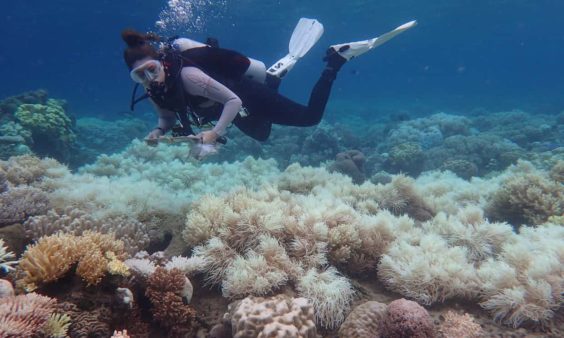 Bleaching damage on the corals of the Great Barrier Reef, Queensland, Australia. Photograph: GREG TORDA/ARC CENTRE CORAL REEF STUDIES HANDOUT/EPA
Bleaching damage on the corals of the Great Barrier Reef, Queensland, Australia. Photograph: GREG TORDA/ARC CENTRE CORAL REEF STUDIES HANDOUT/EPA
US government climate report looks at how the oceans are buffering climate change
A key chapter of the US Global Change Research Program Report deals with how the oceans are being impacted by human carbon pollution
By John Abraham
(The Guardian) The oceans are really the key to the climate change issue, whether that be in quantifying how fast it’s happening or how much will happen in the future. As humans emit greenhouse gases (particularly carbon dioxide), we see some major changes that cannot be explained naturally.
The oceans are important because they act as a buffer; that is, they absorb much of the effects of greenhouse gases. In fact, the oceans absorb a lot of human carbon pollution. This is a big help for us because without the oceans, the climate would change much faster.
But in a certain way, the oceans are hurting us too. Since the oceans absorb so much of our carbon pollution and the resulting heat (93% of the extra heat), they turn a short-term problem into a long-term problem.
15 June
The Dutch Have Solutions to Rising Seas. The World Is Watching.
In the waterlogged Netherlands, climate change is considered neither a hypothetical nor a drag on the economy. Instead, it’s an opportunity.
(NYT) Like cheese in France or cars in Germany, climate change is a business in the Netherlands. Month in, month out, delegations from as far away as Jakarta, Ho Chi Minh City, New York and New Orleans make the rounds in the port city of Rotterdam. They often end up hiring Dutch firms, which dominate the global market in high-tech engineering and water management.
… the Dutch are pioneering a singular way forward.
It is, in essence, to let water in, where possible, not hope to subdue Mother Nature: to live with the water, rather than struggle to defeat it. The Dutch devise lakes, garages, parks and plazas that are a boon to daily life but also double as enormous reservoirs for when the seas and rivers spill over. You may wish to pretend that rising seas are a hoax perpetrated by scientists and a gullible news media. Or you can build barriers galore. But in the end, neither will provide adequate defense, the Dutch say.
And what holds true for managing climate change applies to the social fabric, too. Environmental and social resilience should go hand in hand, officials here believe, improving neighborhoods, spreading equity and taming water during catastrophes. Climate adaptation, if addressed head-on and properly, ought to yield a stronger, richer state.
5 June
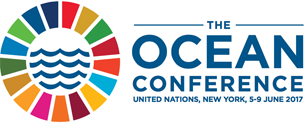 The first UN Ocean Conference. Marine experts from all over the world meet in New York [5-9 June] to discuss how to save the oceans from overfishing and pollution.
The first UN Ocean Conference. Marine experts from all over the world meet in New York [5-9 June] to discuss how to save the oceans from overfishing and pollution.
Our oceans, our future
Partnering for the implementation of Sustainable Development Goal 14
The world has one ocean and its health is critical. Despite its crucial role in contributing to poverty eradication, global food security, human health, economic development and curbing climate change, our ocean is increasingly threatened, degraded or destroyed by human activities, reducing their ability to provide crucial support to our ecosystem. Today, pressures on coastal and marine ecosystems continue to increase, as more communities live along coasts, putting an unsustainable strain on coastal resources. This trend is foreseen to continue given the predicted global population growth.
Already today, 30 per cent of the world’s fish stocks are over-exploited, while more than 50 per cent are fully exploited. Coastal habitats are under pressure, with approximately 20 per cent of the world’s coral reef lost and another 20 per cent degraded. Plastic waste alone kills up to one million sea birds, a hundred thousand sea mammals and countless fish each year. An estimated 80 per cent of marine pollution comes from land-based activities. Moreover, vulnerable groups, including the poor, women, children, and indigenous peoples, and coastal communities and countries with a high dependency on the oceans and their marine resources are particularly affected.
The Ocean Conference, the first United Nations conference on this issue, presents a unique and invaluable opportunity for the world to reverse the precipitous decline of the health of the oceans and seas with concrete solutions. The Conference will also promote progress in the implementation of Sustainable Development Goal 14, which is part of the 2030 Agenda adopted by all 193 UN Member States in 2015. The goal calls for efforts to conserve and sustainably use the oceans, seas and marine resources for sustainable development. For full conference details visit oceanconference.un.org
2016
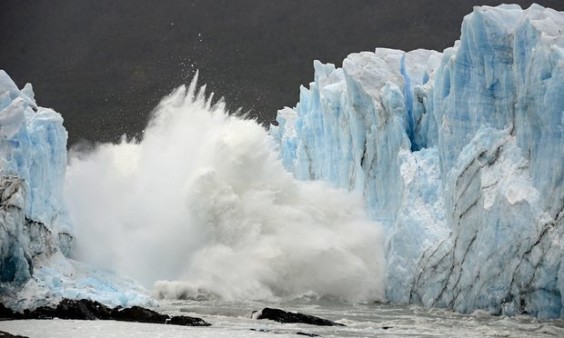 The Perito Moreno Glacier’s ice bridge collapses into Lake Argentina, at Los Glaciares National Park, near El Calafate, in Argentina’s Patagonia region, Thursday, March 10, 2016. Photograph: Francisco Munoz/AP
The Perito Moreno Glacier’s ice bridge collapses into Lake Argentina, at Los Glaciares National Park, near El Calafate, in Argentina’s Patagonia region, Thursday, March 10, 2016. Photograph: Francisco Munoz/AP
Sea level rise is accelerating; how much it costs is up to us
Important new research shows that sea levels are rising at unprecedented rates, and will have tremendous costs if we don’t slow them
(The Guardian) As humans emit heat-trapping gases into the atmosphere, it’s causing the Earth to warm. It’s also causing the ocean waters to rise. In fact, water rise is one of the clearest signatures of a warming world. The questions we want to answer are, how much will sea levels rise, and how fast?
The answers to this have large implications on what societies should do. It isn’t just coastal communities that will be affected. While there are approximately 150 million people worldwide that live within 3 feet of today’s water levels, because of the interconnected economies and societies, ocean rise will affect us all.
The prestigious Proceedings of the National Academy of Sciences recently published a series of sea level rise papers.
One paper covers the Antarctic ice sheet, and the authors look back in time at the world’ largest ice sheet. … A second paper published by Roelof Rietbroek and colleagues looked at the sources of sea level rise. They wanted to know how much of the current rise is from water that is warming and expanding, how much is from melting of ice sheets in Greenland and Antarctica, how much is from melting glaciers, how much is from shifting continents, etc.
The third paper by Robert Kopp and his colleagues uses statistics to find the relationship between temperature and sea level for the Common Era. They find that the sea level rise accelerated in the early 19th century and the rate of water rise in the last century is likely higher than it has been in 2,700 years. Their findings were in good agreement with those of the most recent IPCC report.
The final part of the foursome was authored by Matthias Mengel and his colleagues. That study uses historical information on sea level and climate change projections to make predictions about where ocean levels will be in the next 100 years or so.
2015
29 October
New England’s cod fishery is collapsing, and climate change is to blame.
(Mother Jones) Many people think of climate change as something happening in the atmosphere, but a lot of the most important changes are taking place under the ocean.
In fact, up to one-third of the greenhouse gases humans release, and up to 90 percent of the global warming caused by those gases, ends up sunken in the sea. That has a lot of scary consequences: A rising sea level threatens coastal communities; rising seawater acidity kills off coral and shellfish; and changing conditions are forcing dozens of species, from whales to puffins, into unfamiliar regions of the globe.
Those impacts can also devastate vital US industries, as a peer-reviewed study published today in Nature illustrates. The research found that warming waters are to blame for a recent collapse of the cod fishery in New England. Although a smaller industry than major commercial fish like salmon and mackerel, cod, commonly used for fish sticks and other processed foods, is a multimillion-dollar business in New England.
But the fish have become increasingly rare. Last year, federal regulators slapped tight limits on cod fishing after they discovered that the population was at only 4 percent of the level needed to be sustainable. …
… the key solution that the researchers advocate is better integration of climate modeling in decisions about where, when, and how cod fishing should be allowed. In Canada, extreme limitations on cod fishing seem to have been remarkably successful in revitalizing the population.
22 July
Earth’s Most Famous Climate Scientist Issues Bombshell Sea Level Warning
Could the oceans really rise 10 feet in the next 50 years?
(Mother Jones) In what may prove to be a turning point for political action on climate change, a breathtaking new study casts extreme doubt about the near-term stability of global sea levels.
The study—written by James Hansen, NASA’s former lead climate scientist, and 16 co-authors, many of whom are considered among the top in their fields—concludes that glaciers in Greenland and Antarctica will melt 10 times faster than previous consensus estimates, resulting in sea level rise of at least 10 feet in as little as 50 years. The study, which has not yet been peer-reviewed, brings new importance to a feedback loop in the ocean near Antarctica that results in cooler freshwater from melting glaciers forcing warmer, saltier water underneath the ice sheets, speeding up the melting rate. Hansen, who is known for being alarmist and also right, acknowledges that his study implies change far beyond previous consensus estimates. In a conference call with reporters, he said he hoped the new findings would be “substantially more persuasive than anything previously published.” I certainly find them to be.
To come to their findings, the authors used a mixture of paleoclimate records, computer models, and observations of current rates of sea level rise, but “the real world is moving somewhat faster than the model,” Hansen says.
This story was originally published by Slate and is reproduced here as part of the Climate Desk collaboration.
20 May
World’s first ocean cleaning system to be deployed in 2016
Boyan Slat, 20-year old founder and CEO of The Ocean Cleanup, today announced that the world’s first system to passively clean up plastic pollution from the world’s oceans is to be deployed in 2016. He made the announcement at Asia’s largest technology conference, Seoul Digital Forum, in South Korea.
The array is projected to be deployed in Q2 2016. The feasibility of deployment off the coast of Tsushima, an island located in the waters between Japan and South Korea is currently being researched.
15 May
The Other CO2 Problem Is in Our Oceans
Climate change is fundamentally a story about water. Whether it’s prolonged droughts, severe floods, changing rain and snowfall patterns, or melting glaciers and ice caps — the ways in which humanity will experience and suffer most from climate change is most related to how rising greenhouse gas emissions will impact Earth’s water resources.
In the ocean, the negative impacts are already dramatic and undeniable. The ocean is getting warmer and sea levels are rising. These changes can only occur on a global scale if the planet is warming up significantly. But rising carbon dioxide levels pose another massive threat to the health of the ocean — a phenomenon known as ocean acidification.
When carbon dioxide (CO2) is emitted into the atmosphere it doesn’t just stay there — about 25 per cent of emissions are absorbed into the ocean. Scientists once thought this was beneficial as that carbon dioxide would otherwise accelerate global warming even more. However, it turns out we have instead created an entirely new problem. That’s because as CO2 builds up in the ocean, it causes alkaline seawater to acidify. An ocean increasing in acidity is not a very friendly place for a wide range of creatures, many of which play critical roles in marine food webs and are vital sources of human food.
WMO report: Climate change causing oceans to warm
Increasing greenhouse-gas emissions are having multiple effects, including on ocean-surface temperatures, says a report from the World Meteorological Organization. “Multiple lines of evidence — from mounting surface temperatures to shrinking glaciers, from sea-level rise to weather extremes — show that the climate is changing and that this is largely due to human activities,” says Michel Jarraud, WMO secretary-general. Responding to Climate Change (U.K.) (3/23)
2014
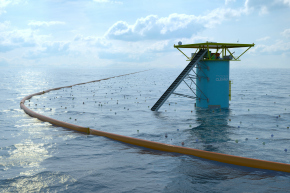 17 October
17 October
The Dutch boy mopping up a sea of plastic
Boyan Slat is a 20-year-old on a mission – to rid the world’s oceans of floating plastic. He has dedicated his teenage years to finding a way of collecting it. But can the system really work – and is there any point when so much new plastic waste is still flowing into the sea every day.
(BBC) Over the last 30 to 40 years, millions of tonnes of plastic have entered the oceans. Global production of plastic now stands at 288 million tonnes per year, of which 10% ends up in the ocean in time. Most of that – 80% – comes from land-based sources. Litter gets swept into drains, and ends up in rivers – so that plastic straw or cup lid you dropped, the cigarette butt you threw on the road… they could all end up in the sea.
Slat had always enjoyed working out solutions to puzzles, and while pondering this one, it came to him – rather than chase plastic, why not harness the currents and wait for it to come to you?
At school, Slat developed his idea further as part of a science project. An array of floating barriers, anchored to the sea bed, would first catch and concentrate the floating debris. The plastic would move along the barriers towards a platform, where it could then be efficiently extracted. The ocean current would pass underneath the barriers, taking all buoyant sea life with it. There would be no emissions, and no nets for marine life to get entangled in. The collected ocean plastic would be recycled and made into products – or oil.
The plastic is carried by currents and congregates in five revolving water systems, called gyres, in the major oceans, the most infamous being the huge Pacific Garbage Patch, half way between Hawaii and California. See also Cleanup Array concept aims to rid the oceans of plastic waste and Delft student’s Ocean Cleanup crowdfunding successful
2013
The Devolution of the Seas — The Consequences of Oceanic Destruction (Registration required)
(Foreign Affairs) Over the last 50 years — a mere blink in geologic time — humanity has come perilously close to reversing the almost miraculous biological abundance of the deep. Pollution, overfishing, the destruction of habitats, and climate change are emptying the oceans and enabling the lowest forms of life to regain their dominance. The oceanographer Jeremy Jackson calls it “the rise of slime”: the transformation of once complex oceanic ecosystems featuring intricate food webs with large animals into simplistic systems dominated by microbes, jellyfish, and disease. In effect, humans are eliminating the lions and tigers of the seas to make room for the cockroaches and rats.
The prospect of vanishing whales, polar bears, bluefin tuna, sea turtles, and wild coasts should be worrying enough on its own. But the disruption of entire ecosystems threatens our very survival, since it is the healthy functioning of these diverse systems that sustains life on earth. Destruction on this level will cost humans dearly in terms of food, jobs, health, and quality of life. It also violates the unspoken promise passed from one generation to the next of a better future. (November/December 2013)
November 2013 • www.fisheries.org
Jeffrey A. Hutchings and John R. Post
Gutting Canada’s Fisheries Act: No Fishery, No Fish Habitat Protection
(American Fisheries Society Vol 38 No 11) p. 497 and ff
Don’t Gut Fisheries Act, Plead 625 Scientists
Tories plan to stop protecting waterways with fish deemed to lack ‘economic, cultural or ecological value.’ By Andrew Nikiforuk, 24 Mar 2012, The Tyee.ca
18 August
Richard Branson and James Cameron want to save the high seas
In international waters, environmental rules are inconsistent, weak or absent. Obama can change that.
By Richard Branson and James Cameron
(LATimes|op-ed) We share a deep and abiding passion for and fascination with the ocean that has led us since childhood to wander the world under the waves. We also share an increasing concern that the health of the ocean is rapidly deteriorating under the strain of human pressure and neglect. The evidence is everywhere, from plastic waste at the bottom of the Arctic Ocean to flattened remains of deep ocean reefs hundreds of miles from land, bulldozed by bottom trawlers. No part of the ocean, no matter how deep or remote, is safe anymore.
At particular risk are international waters that lie beyond the jurisdiction of any country, known as the high seas. This vast realm constitutes two-thirds of the oceans and covers nearly half the planet’s surface, and harbors the largest remaining reservoir of unexplored biodiversity left on Earth. Yet these waters face escalating pressure from overfishing, deep seabed mining, ocean acidification, chemical and noise pollution, huge gyres of plastic waste, dead zones, ship traffic and destructive fishing tactics such as bottom trawling.
Like most commons, the high seas are poorly regulated. Environmental controls on mining, fishing, pollution and shipping are inconsistent, weak or altogether absent. There are no uniform requirements to assess and manage industrial activities, no mandate for modern, ecosystem-based management, and no mechanisms to create marine refuges where sea life can live undisturbed.
In the controlled waters of the United States and other nations, governments have set aside reserves for ocean life. In contrast, less than one-three-hundredth of 1% of the high seas has been protected. Scientists believe that such protected areas are essential for ocean health and global resilience in the face of increasing human pressures.
An important opportunity to begin responsibly managing half the planet lies before us. The United Nations will hold meetings this week to discuss the future of the high seas. Led by Brazil, the European Union, Argentina, Mexico, Monaco and others, a coalition of developed and developing nations has proposed an international agreement to modernize governance of the high seas.
The agreement would provide for high seas protected areas, and require countries proposing to engage in destructive activities to assess and manage their effects. It would also deal with the lack of any rules governing how revenue derived from developing genetic resources in international waters will be shared, an important bar to commercializing new products derived from international waters. Most important, such an agreement would begin to bring to the high seas modern management as practiced in the U.S. and elsewhere since the 1970s. Such an agreement has been discussed and debated for years at the United Nations. It is time to move beyond words to action and begin negotiations.
The United States has been the single most significant obstacle to a new high seas agreement, with the State Department citing potential opposition from members of Congress who are critics of the United Nations. Possible opposition from pharmaceutical, biotech and/or cosmetics companies involved in marine genetic research has also been mentioned, although no such opposition has surfaced in the more than six years these issues have been widely discussed.
We do not believe it makes sense to hold this hugely important ocean conservation initiative hostage to possible opposition in the Senate or unspecified potential concerns by unnamed interests. This is not leadership.
Spearheading negotiations on the conservation and management of the high seas could give the U.S. a big win on a global issue. It would level the playing field by making sure that activities on the high seas are subject to the same kinds of requirements routinely imposed on ocean industries in U.S. coastal waters. Such an agreement would also provide predictability and certainty to companies that take risks to develop commercial products from genetic resources sourced from marine areas beyond national jurisdiction.
How many chances does a president get to influence the future of half the planet for the benefit of all that live on it? That opportunity is here. We urge President Obama and Secretary of State John F. Kerry to seize it, at this critical moment, by joining the call for a new agreement to protect the high seas.
Richard Branson is founder and chairman of Virgin Group. James Cameron is a film director, producer and deep-sea explorer.
26 July
EU seeks high seas protection
THE EU submitted a proposal to the UN on Tuesday to start an international process to conserve marine biodiversity in areas beyond national jurisdiction, in a move welcomed by Oceana.
“In light of the alarming state of the world’s oceans, Oceana highly values the EU’s commitment to conservation and the sustainable use of biodiversity in areas beyond national jurisdiction”, stated Xavier Pastor, executive director of Oceana in Europe. “However, this proposal should not remain a mere declaration of intent. Every country under the umbrella of United Nations, must take its share of the responsibility to protect the high seas, which cover some 64 % of the surface of our oceans and provide over 90% of its volume.”
The proposal … seeks to negotiate an international agreement under the UN Conventions on the Law of the Sea (UNCLOS) focusing on conserving the high seas biodiversity. It follows the commitment reached at Rio+20 along with the already established commitments under the Convention on Biological Diversity (CBD). The proposal’s adoption would establish a clear political mandate to move forward with the conservation of ecosystems in areas beyond national jurisdiction, including through the establishment of marine protected areas or standards for evaluating the impacts of human activities. This call echoes the French government’s recent demand to adopt a binding agreement as soon as possible (Paris Appeal for the High Sea).
World Oceans Day highlights need for ocean management
World Oceans Day was celebrated with the announcement of two World Economic Forum ocean-management initiatives designed to promote sustainability and life-cycle tracking of seafood, writes Greg Stone of Conservation International. The Huffington Post (6/7)
Deep sea ‘gold rush’ moves closer
(BBC) The prospect of a deep sea “gold rush” opening a controversial new frontier for mining on the ocean floor has moved a step closer.
The United Nations has published its first plan for managing the extraction of so-called “nodules” – small mineral-rich rocks – from the seabed.
A technical study was carried out by the UN’s International Seabed Authority – the body overseeing deep sea mining.
It says companies could apply for licences from as soon as 2016
Conservation experts have long warned that mining the seabed will be highly destructive and could have disastrous long-term consequences for marine life.
The ISA study itself recognizes that mining will cause “inevitable environmental damage”.
But the report comes amid what a spokesman describes as “an unprecedented surge” of interest from state-owned and private mining companies
7 May
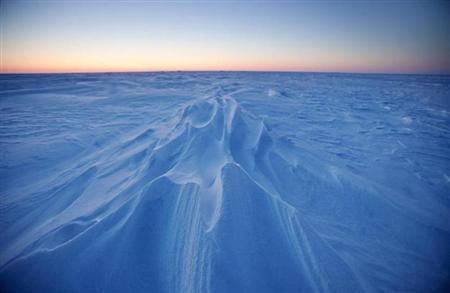
Wind patterns are left in the ice pack that covers the Arctic Ocean north of Prudhoe Bay, Alaska March 19, 2011. Picture taken March 19, 2011.
Photo: Lucas Jackson
Acidification: the latest unknown for stressed Arctic ecosystem
(Planet Ark) The Arctic ecosystem, already under pressure from record ice melts, faces another potential threat in the form of rapid acidification of the ocean, according to an international study published on Monday.
Acidification, blamed on the transformation of rising levels of the greenhouse gas carbon dioxide from the air into carbonic acid in the sea, makes it harder for shellfish and crabs to grow their shells, and might also impair fish reproduction, it said.
Cold water absorbs carbon dioxide more readily than warm water, making the Arctic especially vulnerable. The report said the average acidity of surface ocean waters worldwide was now about 30 percent higher than at the start of the Industrial Revolution.
“Arctic marine waters are experiencing widespread and rapid ocean acidification,” said the report by 60 experts for the Arctic Monitoring and Assessment Programme, commissioned by the eight nations with Arctic territories.
3 May
The White House Convenes Scientists to Discuss the World’s New Ocean
(Atlantic Wire) Despite its straight-from-science-fiction premise, it’s real: A group of scientists meeting at the White House to discuss a brand-new ocean. Impending Arctic ice melt makes this just another day in the geopolitics of climate change.
11 February
Exploitation of high seas at crisis levels
A commission will analyze threats to international waters — areas more than 200 nautical miles offshore — before next year’s meeting of the United Nations General Assembly in an effort to improve governance of resource use. “Without ever making a conscious decision to do it, we are losing unseen habitats whose equals on land would include the giant redwood glades of North America, the baobabs of Madagascar and Amazon rainforest,” writes Callum Roberts, a marine biologist. The Observer (London) (2/9), The New York Times (tiered subscription model)/Green blog (2/11), The Observer (London) (2/9)
2012
Sea level rise “to be far worse” than forecasts
Coastal areas around the world face a greater risk of storm surges and flooding than thought, as sea levels are rising 60% faster than predicted, according to a study by the Potsdam Institute for Climate Impact Research. Researchers said they had excluded causes for the rise in water levels unrelated to climate. The Guardian (London) (11/27), AlertNet/Reuters (11/28)
27 November
Ocean health the focus of Tasmania marine meeting
(Reuters video) Marine scientists from around the world have converged on tiny Maria Island, off the coast of Tasmania, Australia, for a workshop to share research on how human activity is affecting marine diversity around the world.
18 July
U.S.: Republicans Sink Law of the Sea Ratification for Now
(IPS) – Defying the wishes of both the U.S. Chamber of Commerce and the U.S. Navy, Republican senators have effectively halted – for now – an effort by the administration of President Barack Obama to gain ratification of the 30-year-old Law of the Sea Treaty (LOST).
The product of some 15 years of negotiations, LOST, which has been ratified by 161 countries and the European Union, sets rules governing most areas of ocean policy, including navigation and over- flight rights, exploitation of the seabed, conservation and research. … , a growing number of [Republicans] have argued that international treaties unduly constrain Washington’s freedom of action in the world and threaten its sovereignty.
10 July
Scientists Declare State of Emergency for World’s Coral Reefs
(IPS) Coral reef scientists urged local and national governments to take action to save the world’s coral reefs and said they’d be “on call 24/7″ to assist politicians and officials.
Without global action to reduce carbon dioxide emissions and greatly improve local protection, most of the world’s coral reefs will be devastated and the benefits they provide billions of people will be lost in the coming decades, scientists warned at the opening of 12th International Coral Reef Symposium (ICRS) in Cairns, Australia … more than 2,500 marine scientists have signed a consensus statement to that effect
Protecting reefs locally may mean reducing fishing, preventing pollution, constraining coastal development and other measures that may be seen as politically risky or difficult. However, scientists stand ready to back up local and global efforts to save reefs.
6 July
“No Future We Want Without the Ocean We Need”
(IPS) – The entire focus of Expo 2012, which completes its three month run Aug. 21, is on the protection of the world’s maritime resources, including overfishing, chemical pollution and warming oceans.
And by accident or by design, the protection of the world’s oceans was one of the few key success stories to come out of the Rio+20 summit in its final plan of action titled “The Future We Want” adopted by world leaders last month.
3 July
Rising sea levels threaten islanders with displacement
(SciDev.Net) A significant rise in sea levels due to global warming could result in the loss of species and habitats in the coastal areas of more than a thousand islands in South-East Asia and the Pacific region, leading to the potential displacement of many millions of people, according to a study.
Some of the areas at risk — such as Indonesia, Malaysia, the Philippines, East Timor, Papua New Guinea and Thailand — are known biodiversity hotspots. Others, like Fiji, Samoa and Vanuatu, possess endemic species.
The study, Future climate change driven sea-level rise: secondary consequences from human displacement for island biodiversity, points out that some species, particularly those mammals that range widely within low-lying coastal zones or in hinterland regions, could be wiped out entirely. People are also likely to have to migrate from coastal areas to island interiors due to permanent flooding in littoral settlements.
24 June
Rising sea levels to hit California hard by 2100
(Planet Ark) Seas could rise higher along the California coastline this century than in other places in the world, increasing the risk of flooding and storm damage, dune erosion and wetland destruction, the U.S. National Research Council reported Friday.
The report looked at how much seas could rise by 2100 along the US West Coast, and found that the water off California’s coast from the Mexican border to Cape Mendocino could rise between 16.5 inches and 66 inches by century’s end, compared to what they were in 2000.
22 June
Ocean Advocates Find Silver Linings After Rio+20 Disappointment
Although agreement was not reached on policing international waters, some firm commitments were made in Brazil.
(National Geographic News) It is not all bad news, just discouraging to hear the French ambassador say that the will of 183 countries concerning developing a framework for governance of the high seas had come unglued owing to opposition from a small number of powerful countries.”
[National Geographic Explorer-in-Residence Sylvia] Earle is referring to the United States, Russia, Canada, and Venezuela in particular, who, according to reports, moved to block specific rulemaking on environmental protections in international waters during late-night, closed-door negotiations earlier this week.
…
Earle said she believes the U.S. government is resistant to start negotiations on a new international oceans treaty, since there has been recent movement to ratify the Law of the Sea Treaty, an international agreement that went into effect in 1994 but counts the U.S. as one of a handful of holdout countries. The Law of the Sea Treaty does include some environmental guidelines, but not as many specific protections as Earle would like.
20 June
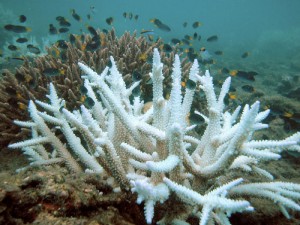 Sigourney Weaver: At Rio+20 Earth Summit, An Important Step Forward for the World’s Oceans
Sigourney Weaver: At Rio+20 Earth Summit, An Important Step Forward for the World’s Oceans
(OnEarth) Our oceans generate most of our oxygen, regulate our climate, and provide most of our population with sustenance. They are essential to all life on earth. Yet our oceans face a threat as dangerous as any Pandora faced: ocean acidification.
Ocean acidification is an urgent and profound threat to our planet’s ocean life and to the coastal communities that depend upon healthy oceans for food and economic development opportunities. Without healthy populations of ocean fish, or vibrant reefs, many coastal communities could lose their primary food source or their most promising job opportunity. We cannot prosper unless the ocean prospers, too.
Despite the seriousness of this threat, too few people know about this issue. That is why I teamed up with the Natural Resources Defense Council (which publishes OnEarth) to create the movie ACID TEST: The Global Challenge of Ocean Acidification. It is critical that more people become aware of, and urge their lawmakers to address, ocean acidification.
19 June
Furious Greenpeace moves to ‘war footing’ at Rio+20
Pace quickens at Rio summit, as NGO director responds to weakened oceans proposals with promise of civil disobedience
15 June
The Mystery of the Sinking South Pacific Islands
(Spiegel) Environmentalist organizations have used images from South Pacific islands to illustrate the disastrous effects of rising sea levels. But a group of French researchers has found that the problem is much more complicated: The islands are also being pulled under by shifting tectonic plates.
And on the other side of the world
Venice’s Eternal Battle against Water
(Spiegel) Slowly but surely, Venice is sinking. The city has battled the water ever since it was founded 1,600 years ago in a marshy lagoon. Now it’s working on a gigantic project to prevent the floods that threaten its future — but experts are divided over whether it will work.
Why small fish need attention on World Oceans Day
Sardines, herring and squid are vital to ocean ecosystems and human economies, but many of them are in danger of overharvesting, writes Ben Enticknap of Oceana. Some activists are hoping the Rio+20 conference will address oceans and marine protections. “This year’s Oceans Day theme is ‘Youth: The Next Wave for Change.’ The future of ocean conservation will soon be in their hands, but we must leave them something to work with,” Enticknap writes. The Oregonian (Portland) (6/8), SciDev.net (6/8)
New global partnership to protect world’s oceans
Law of the Sea faces resistance in U.S. Senate
Some conservative U.S. senators are seeking a postponement of any vote on the ratification of the United Nations Convention on the Law of the Sea until after the November elections. The treaty requires a two-thirds approval in the Senate. The Washington Post/Fine Print blog (5/28)
Adapting to rising seas with amphibious homes
The effects of extreme weather, especially floods, are fueling leaps of imagination among architects the world over. Floating houses, prisons and greenhouses are already in place in the Netherlands, which has been managing water since the Middle Ages and has shared its expertise with Indonesia, China, Thailand, Dubai and the Maldives. Architectural Record/The Associated Press (free registration) (4/3)
16 March
Expo 2012 to Focus on Protecting World’s Marine Resources
(IPS) – The United Nations, which is hosting a major international summit on the global environment in Brazil in late June, points out that while the world’s oceans account for 70 percent of the earth’s surface, only one percent of this area is protected.
The growing degradation of the oceans, including overfishing, pollution and loss of biodiversity, will be high on the agenda of the Rio+20 … Touching on many related issues will be Expo 2012, scheduled to take place May 12 through Aug. 12 in South Korea’s coastal city of Yeosu, which will focus on the protection of the world’s oceans and coastlines.
The World Bank today christened the Global Partnership for Oceans, a new coalition aimed at raising $1.5 billion to double protected areas in the world’s oceans, and rebuild fish stocks, to help counteract overfishing, habitat loss and environmental degradation. “Send out the S-O-S: We need to Save Our Seas,” said World Bank President Robert Zoellick. The Guardian (London) (2/24), Al-Jazeera (2/24)
2011
Island nations seek UN climate action
Leaders of island nations on Saturday pleaded with the United Nations to move more quickly to reduce carbon emissions worldwide in order to prevent flooding and damage from more severe storms in light of rising sea levels attributed to climate change. “Without international cooperation and concerted effort the impact of climate change will be devastating for all our nations,” Navinchandra Ramgoolam, prime minister of Mauritius, in the Indian Ocean, told the world body’s General Assembly.The Washington Post/The Associated Press (9/24)
15 July
UN Climate Body Struggling to Pinpoint Rising Sea Levels
(Spiegel) The United Nations’ forecast of how quickly global sea levels will rise this century is vital in determining how much money might be needed to combat the phenomenon. But predictions by researchers vary wildly, and the attempt to find consensus has become fractious.
When the next report from the United Nations Intergovernmental Panel on Climate Change (IPCC) is issued in two years, it will include a forecast for how high the world’s oceans might rise by 2100. With 146 million people in the world currently living less than one meter above sea level, the forecast will be vital in determining how much money governments must spend on measures to protect people from the rising waters and to resettle those in the most acute danger.
World’s oceans face severe, rapid degeneration
The speed and rate of degeneration of the world’s oceans is far more severe than previously predicted and is comparable to five mass extinctions on geological record, according to a new report. The report cites the cumulative effects of climate change, seawater acidification, presence of pollutants and overfishing as driving the change, and warns the early stages of significant global extinction may already be under way. The Independent (London) (6/21)
3 May
Seas could rise up to 1.6 meters by 2100: study
(Reuters) – Quickening climate change in the Arctic including a thaw of Greenland’s ice could raise world sea levels by up to 1.6 meters by 2100, an international report showed on Tuesday.
Such a rise — above most past scientific estimates — would add to threats to coasts from Bangladesh to Florida, low-lying Pacific islands and cities from London to Shanghai. It would also, for instance, raise costs of building tsunami barriers in Japan.
“The past six years (until 2010) have been the warmest period ever recorded in the Arctic,” according to the Oslo-based Arctic Monitoring and Assessment Programme (AMAP), which is backed by the eight-nation Arctic Council.
2010
3 April
Strange case of the disappearing islands
By Cleo Paskal
(New Zealand Herald) Because the convention [on the Law of the Sea] didn’t take environmental change in to account when it was drafted, it may end up creating new geopolitical hotspots. Some are trying to bypass this by finding bilateral or regional solutions.
As with Tuvalu, the Indian Ocean nation of the Maldives is composed entirely of low-lying coral atolls. Its president, Mohamed Nasheed, has been actively trying to secure a home for his citizens should evacuation prove necessary. One approach was land purchase. According to President Nasheed: “We can do nothing to stop climate change on our own and so we have to buy land elsewhere. It’s an insurance policy for the worst possible outcome. After all, the Israelis [began by buying] land in Palestine.”
Another approach is to use the value of national sovereignty to “pay” for relocation. In that model, neighbouring India, for example, would take in the Maldivian immigrants in exchange for India being able to extend its national waters to include Maldivian waters.
The proceeds from this extended EEZ (fisheries rights, seabed mining, etc) could be used to resettle and set up a trust fund for Maldivian immigrants, along the lines of land claim settlements in Canada. Maldivians could also get preferential access to the waters for economic development and, should the islands ever re-emerge, resettlement could be possible. The advantage for India would be an orderly settlement of relatively wealthy immigrants, and an extension of its coastal security zone.
This model might also be applicable in the Pacific. For example, if as the scientists tell us, Tuvalu will eventually need to be evacuated, and New Zealand takes in the bulk of the refugees, that patch of ocean could be administered from New Zealand by and for the benefit of the immigrants, affording resettlement money and economic prospects associated with their old homeland for those who want it.
The administration could be done through a sort of combination government-in-exile and trust.
It is worth noting that the host country need not be New Zealand or Australia. Given the geostrategic importance of the region, a “bidding war” for the immigrants might ensue with countries such as China and Taiwan looking to take in the immigrants in exchange for increased access to the region.
25 March
Rising Sea Levels Swallow Tiny Island, Settle 30-Year Dispute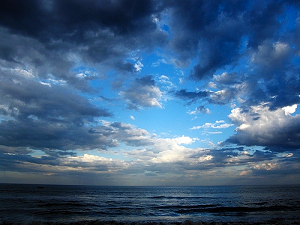
New Moore Island is now completely submerged underwater. If you’ve never heard of it before, it’s located in the Bay of Bengal and part of the Sundarbans (the largest block of tidal halophytic mangrove forest in the world). It was also part of a 30 year dispute between India and Bangladesh; but at least that’s finally been resolved.
2009
24 November
Rising sea levels: A tale of two cities (Rotterdam and Maputo)
When people talk about the impact of rising sea levels, they often think of small island states that risk being submerged if global warming continues unchecked. But it’s not only those on low-lying islands who are in danger. Millions of people live by the sea – and are dependent on it for their livelihoods – and many of the world’s largest cities are on the coast. By 2050 the number of people living in delta cities is set to increase by as much as 70%, experts suggest, vastly increasing the number of those at risk.
18 October
Maldives cabinet makes a splash
(BBC) The government of the Maldives has held a cabinet meeting underwater to highlight the threat of global warming to the low-lying Indian Ocean nation.
President Mohamed Nasheed and his cabinet signed a document calling for global cuts in carbon emissions.
Ministers spent half an hour on the sea bed, communicating with white boards and hand signals.
Sea changes could bring disaster to Nile Delta
Polar glacier melting is a direct threat to one of the most densely populated regions in the world: Egypt’s Nile Delta. Home to two-thirds of the nation’s growing population, the Nile is susceptible to flooding as much of its long coastline is at or below sea level. The Intergovernmental Panel on Climate Change has declared the Nile Delta among the places most vulnerable to a change in sea elevation because even a modest change in sea levels would displace millions. The Guardian (London) (8/21)
19 July
At Risk From Rising Seas, Tuvalu Seeks Clean Power
(Reuters/Planet Ark) Tuvalu and many other low-lying atolls in the Pacific, the Indian Ocean and the Caribbean fear that rising sea levels could wipe them off the map. They want governments to agree a strong new U.N. deal in Copenhagen in December to slow climate change.
3 July
World’s largest ocean observatory takes shape
(University of Victoria) Canada is taking the world on a 25-year non-stop research expedition—into the deep ocean.
Led by the University of Victoria, NEPTUNE Canada pioneers a new generation of ocean observation systems that—using abundant power and the Internet—provide continuous, long-term monitoring of ocean processes and events, as they happen. Land-based researchers across Canada and around the world will use NEPTUNE Canada to conduct offshore and deep-sea experiments and receive real-time data without leaving their laboratories and offices.
Observations from NEPTUNE Canada will have wide-ranging policy applications in the areas of climate change, hazard mitigation (earthquakes and tsunamis), ocean pollution, port security and shipping, resource development, sovereignty and security, and ocean management. Its cutting-edge technologies are already generating commercialization and job creation opportunities.
NEPTUNE Canada is being developed through investments of more than $100 million from the Government of Canada, the Canada Foundation for Innovation, the Natural Sciences and Engineering Research Council of Canada, CANARIE, and the Government of British Columbia through the BC Knowledge Development Fund.
27 May
Melting Greenland ice sheets may threaten Northeast United States, Canada
BOULDER–Melting of the Greenland ice sheet this century may drive more water than previously thought toward the already threatened coastlines of New York, Boston, Halifax, and other cities in the northeastern United States and in Canada, according to new research led by the National Center for Atmospheric Research (NCAR). The study finds that if Greenland’s ice melts at moderate to high rates, ocean circulation by 2100 may shift and cause sea levels off the northeast coast of North America to rise by about 12 to 20 inches (about 30 to 50 centimeters) more than in other coastal areas. The research builds on recent reports that have found that sea level rise associated with global warming could adversely affect North America, and its findings suggest that the situation is more threatening than previously believed.
17 May
As Alaska Glaciers Melt, It’s Land That’s Rising
(NYT) JUNEAU, Alaska — Global warming conjures images of rising seas that threaten coastal areas. But in Juneau, as almost nowhere else in the world, climate change is having the opposite effect: As the glaciers here melt, the land is rising, causing the sea to retreat.
Maldives considers plan to relocate residents of island
Mohamed Nasheed, President of the Maldives, has announced an unprecedented — even audacious — plan to try to relocate all 300,000 residents of the Maldives to a different nation. The plan would use tourism revenues to fund a sovereign wealth fund to secure the country’s future should it exist on its own territory or as a sovereign municipality within another area. The Maldives archipelago has an average elevation of 4 feet. New York Times (05/08)
13 March
A sinking feeling
Sea levels are rising twice as fast as had been thought
(The Economist print edition) SCIENCE and politics are inextricably linked. At a scientific conference on climate change held this week in Copenhagen, four environmental experts announced that sea levels appear to be rising almost twice as rapidly as had been forecast by the United Nations just two years ago. The warning is aimed at politicians who will meet in the same city in December to discuss the same subject and, perhaps, to thrash out an international agreement to counter it.
The reason for the rapid change in the predicted rise in sea levels is a rapid increase in the information available. In 2007, when the Intergovernmental Panel on Climate Change convened by the UN made its prediction that sea levels would rise by between 18cm and 59cm by 2100, a lack of knowledge about how the polar ice caps were behaving was behind much of the uncertainty. Since then they have been closely monitored, and the results are disturbing. Both the Greenland and the Antarctic caps have been melting at an accelerating rate. It is this melting ice that is raising sea levels much faster than had been expected. Indeed, scientists now reckon that sea levels will rise by between 50cm and 100cm by 2100, unless action is taken to curb climate change.
25 January
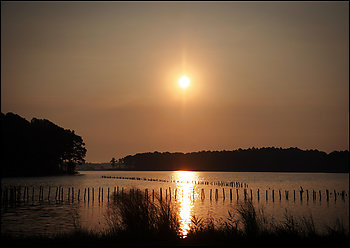 Warming Trends Alter Conservation
Warming Trends Alter Conservation
Experts Think Old Paradigm of Fixed Boundaries Will Not Work as Sea Levels Rise
At the Blackwater National Wildlife Refuge on Maryland’s Eastern Shore (Photo at right by Andrea Bruce, Washington Post), sea-level rise threatens to drown the brackish marsh on which migrating shorebirds depend. In Northern California, the shrinking snowpack has reduced stream flows that sustain the delta smelt, a federally threatened fish species. Higher summer temperatures in northern Minnesota have depressed the birthrates of the area’s once-populous moose, and just 20 inhabit the Agassiz National Wildlife Refuge that was designed in part to shelter them.
As climate change begins to transform the environment in the United States and overseas, policymakers and environmentalists are realizing that the old paradigm of setting aside tracts of land or sea to preserve species that might otherwise disappear is no longer sufficient. Experts are exploring new strategies, focusing on such steps as protecting migration corridors, collecting and transplanting seeds, making sanctuary boundaries flexible and managing forests in novel ways.
2008
30 December
A meltdown tinged with acid
(The Economist) EVEN if they do not live in the Maldives or Bangladesh, most people can appreciate the seriousness of rising sea levels. Much harder to grasp are most of the other consequences of global warming, and especially of the build-up of carbon dioxide in the atmosphere.
About a third of this CO2 ends up in the sea. Over geological time, virtually all the carbon released into the atmosphere has been taken out of it by living organisms and found its way into sediments, most of them in the sea (some has then gone into petroleum deposits). A vast amount of carbon is swilling about or sitting in the deep sea below 200 metres, where a biological pump pushes it round in such a way that any carbon atom entering the depths from the atmosphere will return to the surface every 500-1,200 years.
11 August
Ecological extinction and evolution in the brave new ocean
…Ocean Warming and Acidification.
By Jeremy B. C. Jackson
(Proceedings of the National Academy of Sciences) Rising temperatures and falling pH are as ominous for the future of corals and coral reefs (6, 11, 56, 91) as for calcareous plankton (7). Warming has caused mass mortality of corals by coral bleaching that has increased in frequency and intensity over the past two to three decades. Reduction of pH reduces coral growth rates and skeletal density, and may eventually stop calcification entirely, so that corals lose their skeletons and resemble small colonial sea anemones (92). Regardless of whether or not the corals can survive under such circumstances, reef formation would be severely reduced or halted if acidification proceeded at current rates.
15 February
Study Finds Humans’ Effect on Oceans Comprehensive
(Wa Post)Human activities are affecting every square mile of the world’s oceans, according to a study by a team of American, British and Canadian researchers who mapped the severity of the effects from pole to pole.
The analysis of 17 global data sets, led by Benjamin S. Halpern of the National Center for Ecological Analysis and Synthesis in Santa Barbara, Calif., details how humans are reshaping the seas through overfishing, air and water pollution, commercial shipping and other activities. The study, published online yesterday by the journal Science, examines those effects on nearly two dozen marine ecosystems, including coral reefs and continental shelves. Some marine ecosystems are under acute pressure, the scientists concluded, including sea mounts, mangrove swamps, sea grass and coral reefs. Almost half of all coral reefs, they wrote, “experience medium high to very high impact” from humans. Overall, rising ocean temperatures represent the biggest threat to marine ecosystems.
2006
10 March
Bering Sea Climate Is Shifting
Whales, walruses, seabirds and fish are struggling to survive the changing climate of the Bering Sea, their northern feeding grounds perhaps permanently disrupted by warmer temperatures and melting ice, scientists reported Thursday in the journal Science.
By pulling together a broad range of observations and surveys, an international research team concluded that it is witnessing the transformation of an entire ecosystem in a region home to almost half of U.S. commercial fish production.
All in all, the researchers said, the Arctic climate of the northern Bering Sea is in full retreat, yielding to the sub-Arctic system of the south. The changes are profound and perhaps irreversible, even if cold weather eventually returns, the researchers said. …Overall, the Arctic is warming at twice the average global rate. …Consequently, the local sea ice melts three weeks earlier than in 1997, records of recent years show. Last year, Arctic ice retreated farther than in 25 years of satellite monitoring. …The researchers found that by 2002, Pacific gray whales were fleeing northward to feed in cooler currents, while pink salmon by the millions swarmed into warmer waters the whales had abandoned. Bottom-dwelling species, unable to adapt, were destroyed in large numbers. The broken shells of a vanished clam species carpeted the sea floor.
As sea ice diminished, breeding grounds for seals were disrupted and populations plummeted. Polar bears started to drown. Walruses, accustomed to diving in the shallows to feed along the sea bottom, found themselves adrift on broken ice floes in waters 6,500 feet deep. The animals starved.
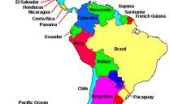



3 Comments on "Oceans and seas"
i have read this summary and it has helped me a lot for the time being being im in a project of assessing the impact of climate change to sea level rise along the indian ocean cost.
My closest communication with the oceans has been through my relationship with fishing Atlantic salmon. As a catch and release advocate, the salmon I have met begrudgingly shared a scale or two as snapshots of their lives so far, then returned to their perilous journey to spawn in the tributaries of one of the only remaining safe havens of the Quebec north shore. They then headed back through the several thousand kilometers of open sea to their feeding grounds off the coast of Greenland, which unfortunately has just ramped up their commercial fishing for the first time in 10 years. Each summer I have been indirectly involved in tracking these salmon through our research efforts with the ASF(http://www.asf.ca/main.html). This relationship has led me to greatly appreciate the role of the OTN(http://oceantrackingnetwork.org/) in the future of our oceans. If ever Dr. Fred Whoriskey were in Montreal on a Wednesday night, I cannot imagine a better invited guest for a serious discussion of our oceans.
The report from 10 March 2006: Bering Sea Climate Is Shifting sounds almost exactly the same as a news article from Nov 2, 1922. Interesting to say the least.
From the Washington Post, 11/02/1922: The Arctic ocean is warming up, icebergs are growing scarcer and in some places the seals are finding the water too hot, according to a report to the Commerce Department yesterday from Consul Ifft, at Bergen, Norway.
Reports from fishermen, seal hunters and explorers, he declared, all point to a radical change in climate conditions and hitherto unheard-of temperatures in the Arctic zone. Exploration expeditions report that scarcely any ice has been met with as far north as 81 degrees 29 minutes. Soundings to a depth of 3,100 meters showed the gulf stream still very warm.
Great masses of ice have been replaced by moraines of earth and stones, the report continued, while at many points well known glaciers have entirely disappeared. Very few seals and no white fish are found in the eastern Arctic, while vast shoals of herring and smelts, which have never before ventured so far north, are being encountered in the old seal fishing grounds.